Purmamarca 90k,55m***
(Riders note: The distance above is our riding distance for the day. The actual distance from Jujuy to Purmamarca is about 3 miles less. We started 15 miles north of Jujuy and ended 18 miles past Purmamarca, trying to gain some distance on rough riding days ahead.)
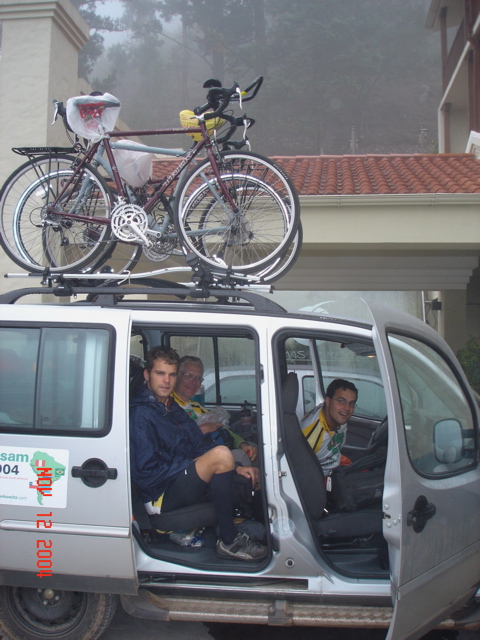
Dalton wanted to stay at Thermes del Reyes a bit longer. It was rainy and cold this morning. The beautiful valley we saw the night before was completely hidden in fog or clouds. The hotel’s spa (think massage) opened at 9a. It seemed an obvious choice to stall, for at least a while. But no. We have to ride. We put on our rain gear, and luckily Eduardo thought to cover our seats the night before.
5,100 feet. We drove back to our ending point the day before, on Ruta 9 about 15 miles past the city of Jujuy, just before 3 miles of sinuous curves that take you up to 6,600 feet. The road is 3-lanes wide here, and this is Steve and I going up it.
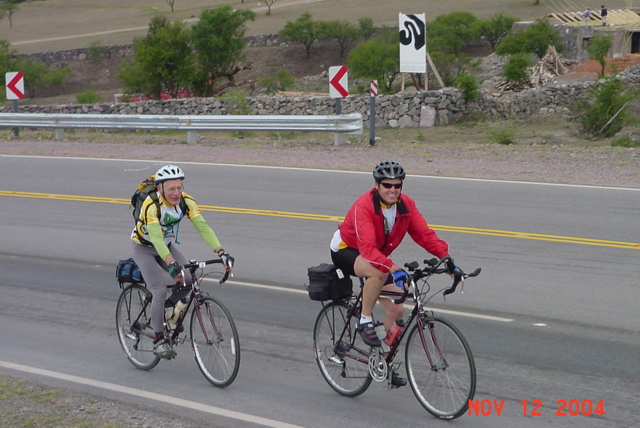
Then we rode fairly straight north along the glacial valley that takes you to the Pumamara turnoff on Argentina Ruta 52.
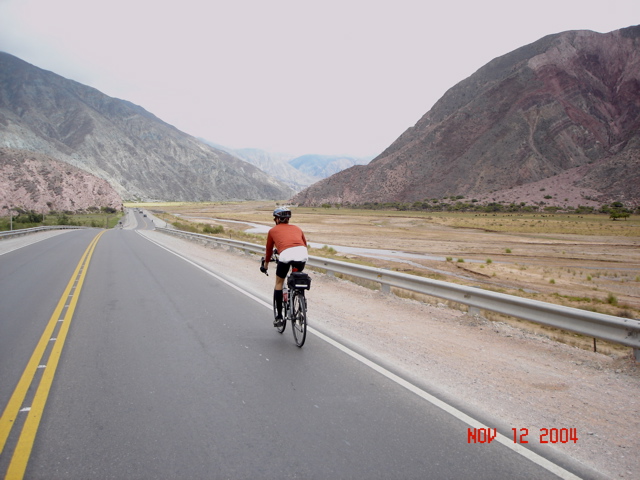
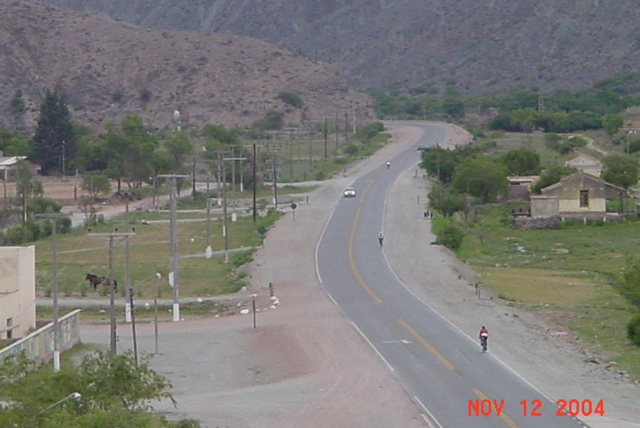
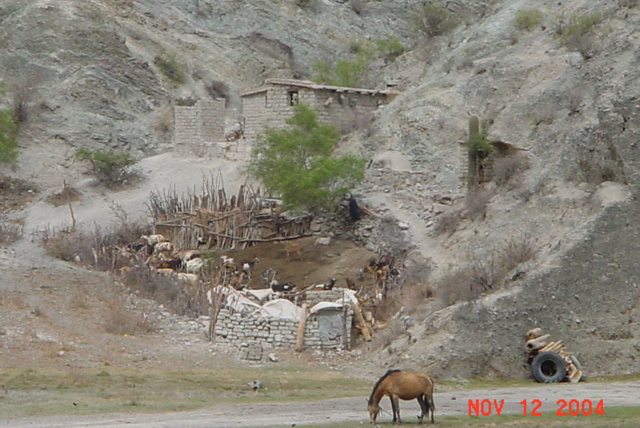
The second photo in that stack is the 3 of us riding through one of the few little villages along the way, followed by Eduardo’s photo of a typical ranch here. Most of the people here live in adobe homes made from very nearby earth. Outside the villages, they don’t have running water or electricity.
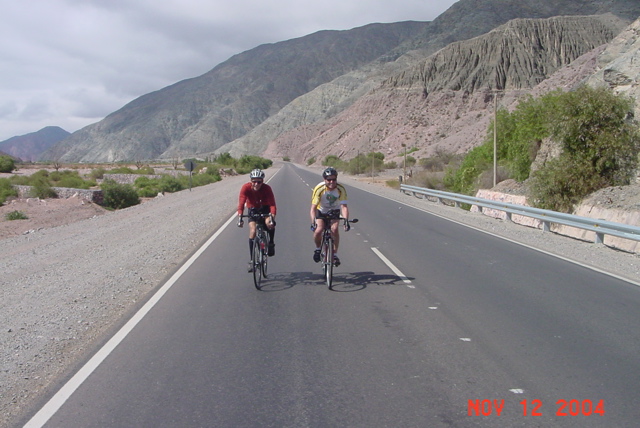
Dalton and I play this game of chicken with Eduardo when he takes pictures from the middle of the road. He shoots, lifts his arms and we ride by fast and close enough to almost touch him.
By now the trees were mostly gone. The clouds covered the taller peaks in the area, but the road was dry.
7,400 feet. We made it to Pumamara. As you head into town you are greated by this welcome sign and view. This is the land of the mountains of 7 colors.
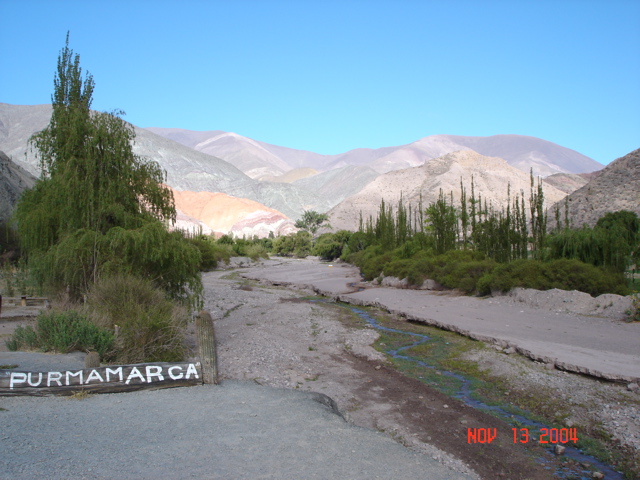
Just after the sign are some craft sellers under the bush/tree thing (Steve?) getting a jump on the competition in the town square.
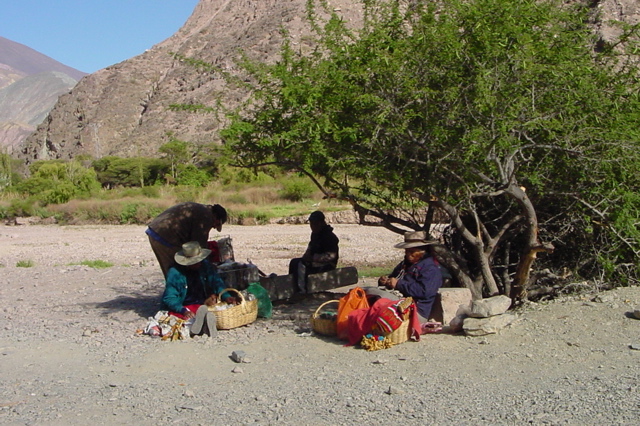
Purmamarca has been around for over 400 years- actually much longer, but that’s when the Europeans came and started keeping track of such things, converted the Indians and built the church. The village at the junction of an east-west pass that can get you to the altiplano, and the north-south valley that gets you into the arable part of northern Argentina. The few blocks by few blocks village also has a few restaurants and hotels, and a small museum. It’s authentic and really worth visiting if you ever get to this part of the world.
At this point it was only 11AM – too early for lunch. We rode around the town square market, and took pictures of the old church.
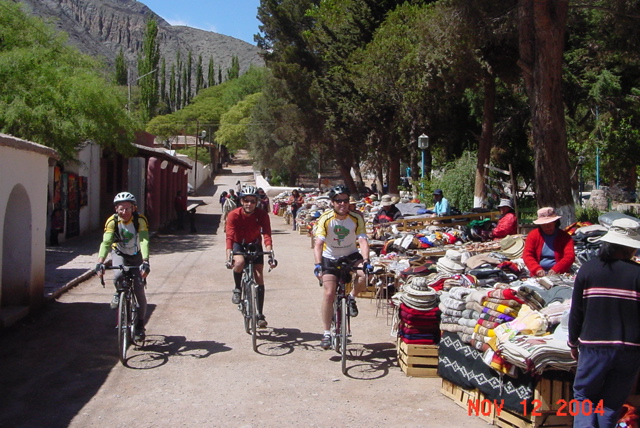
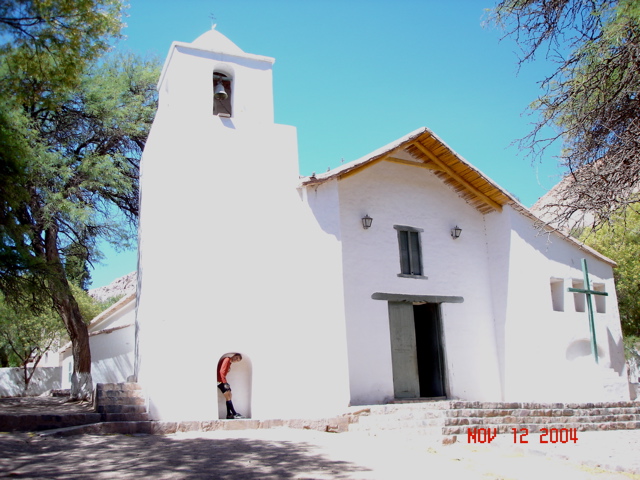
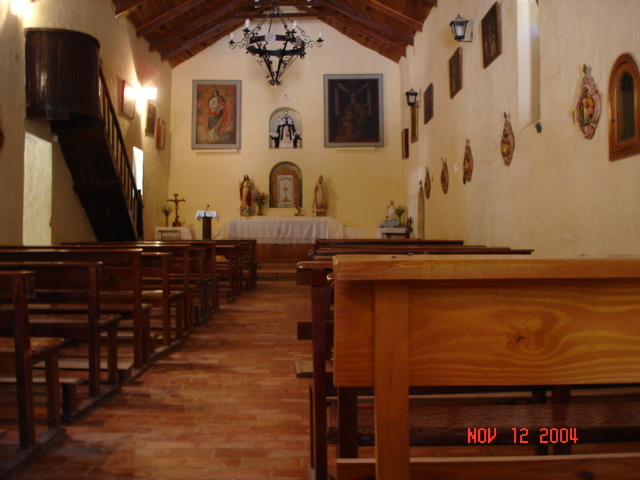
The arts and crafts are all locally made. More details on Purmamara are at the end of this update. Dalton requests posting the following picture of this black dog who followed him on our wanderings through the village..
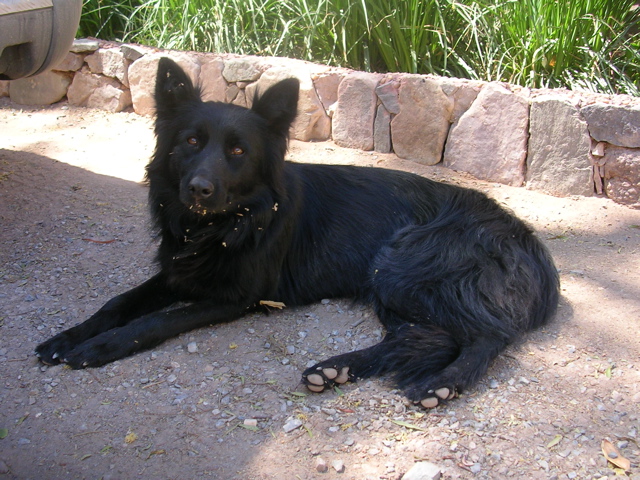
The restaurants were closed until 12:30pm, so, rather than stall further we snacked, got interviewed by some journalism students from Jujuy, and hit the road. I’m not really holding my fingers above that guy’s head as he interviews Eduardo, it just seems that way.
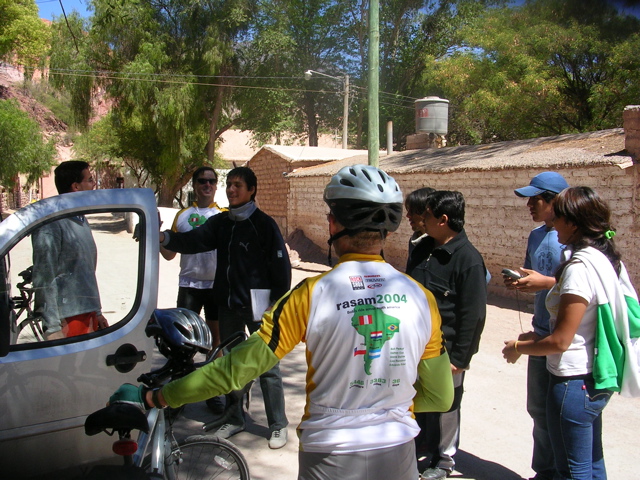
We wanted to get a head start on what will be the biggest climb in our lives. “In less than eight kilometers you ascend nearly 2,000 meters on a recently paved road comprised of extremely tight curves, most of which lack guardrails. At the top, the signpost reads 4,170 meters.” Here are a few pictures of us on this climb, which took about 4-1/2 hours for Steve, who made it to the top first.
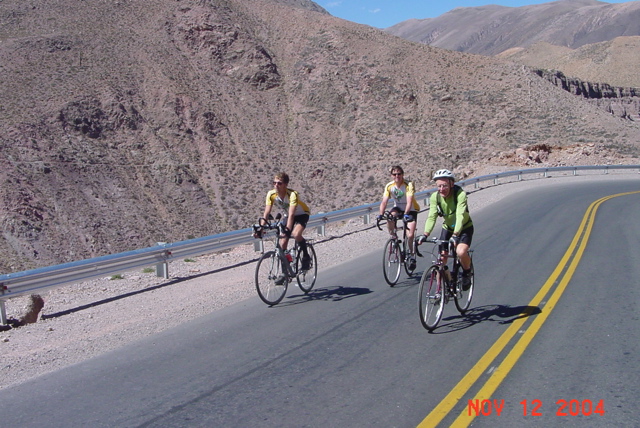
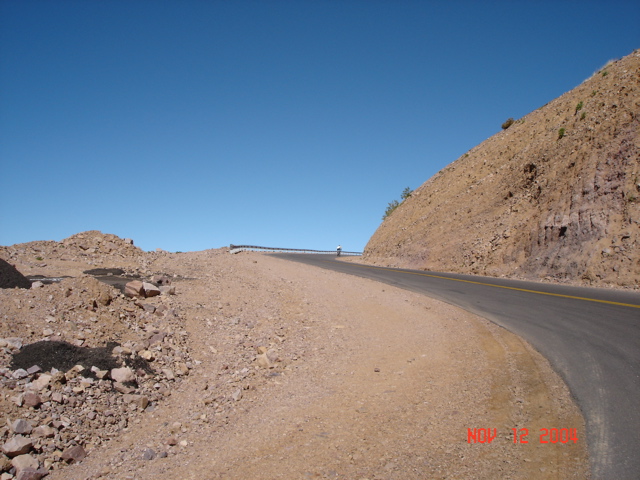
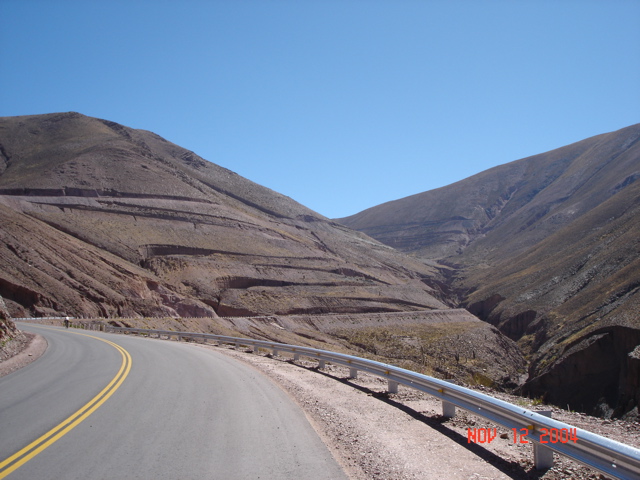
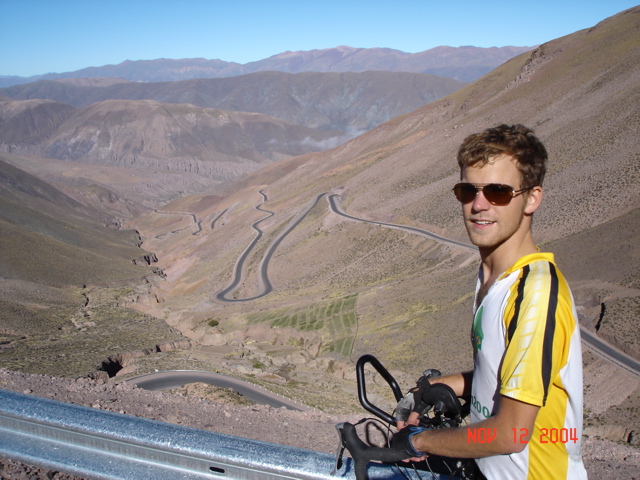
It’s hard to imagine how continuously steep this ride is. The second photo in the stack above is Dalton ahead of me on one of the first sets of switchbacks. The third photo shows the switchbacks on the mountain immediately in front, and those on the farther mountain. It would take an aircraft to photograph the whole set, but the last photo shows Dalton at a mid-point in the climb.
Steve was a steady riding machine. Dalton was passionate and emotionally volatile about the whole thing. I deteriorated to about 4mph, and with some massive discouragement bailed out 1,700 feet (altitude) from the top. Eduardo took my bike and finished the climb. Here is Dalton’s reaction to the climb, and the Steve and Dalton greeting Eduardo at the top.
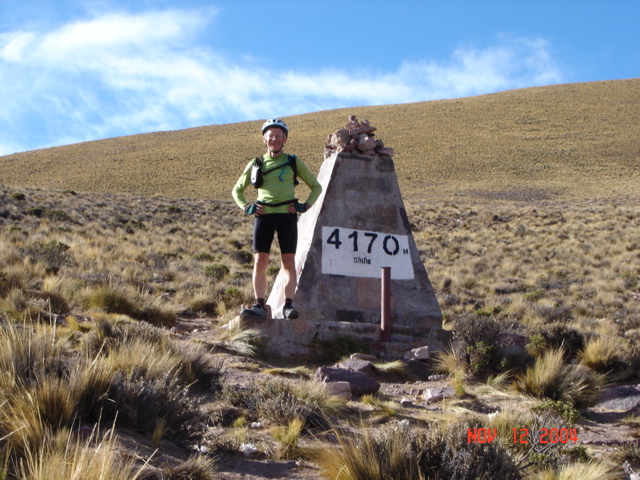
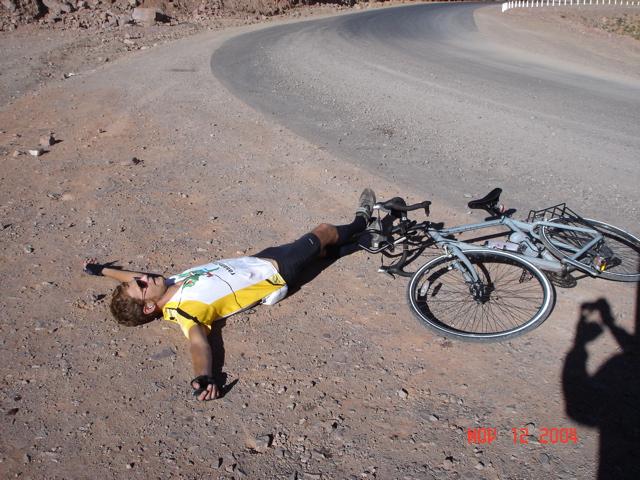
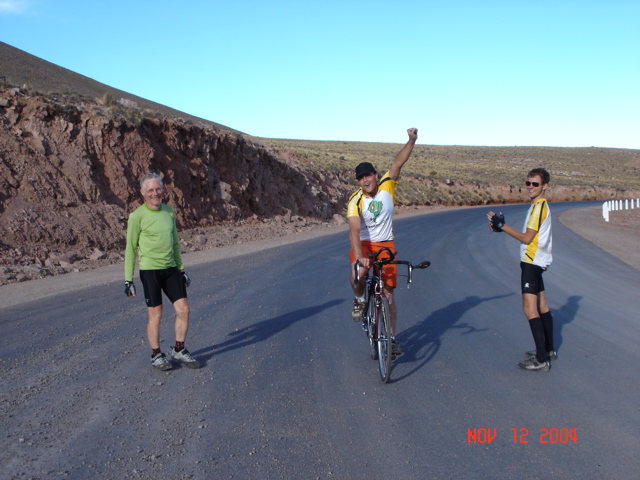
We put the bikes on top of the Fiat Doblo Adventure and drove back down the 18 miles to the Hotel El Manatial del Silencio in Purmamarca – our third spectacular hotel in a row. This next photo is of us unloading, followed by the view from my room.
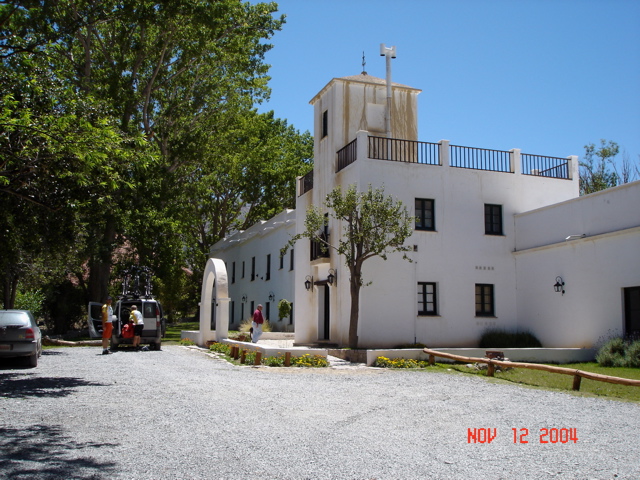
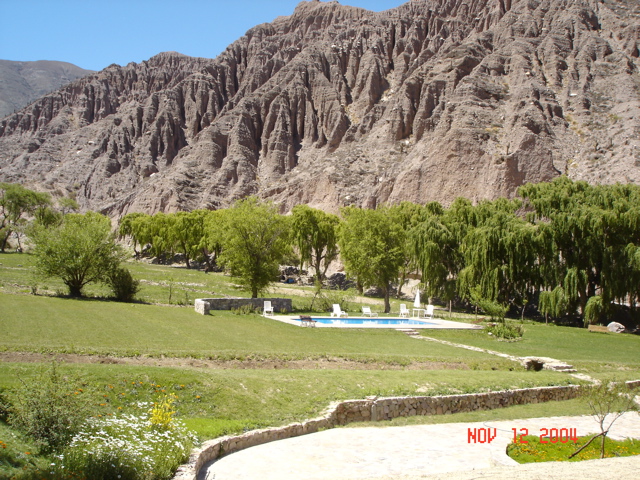
The last photograph of today is of adobe bricks drying in the afternoon sun in front of the hotel. We pass dozens of home-based brick making factories each day. They’re easy to make – wet the ground, mix in a little grass (?),, carve them out, let them dry, tilt them up, let them dry some more and you have a building material that will last for centuries.
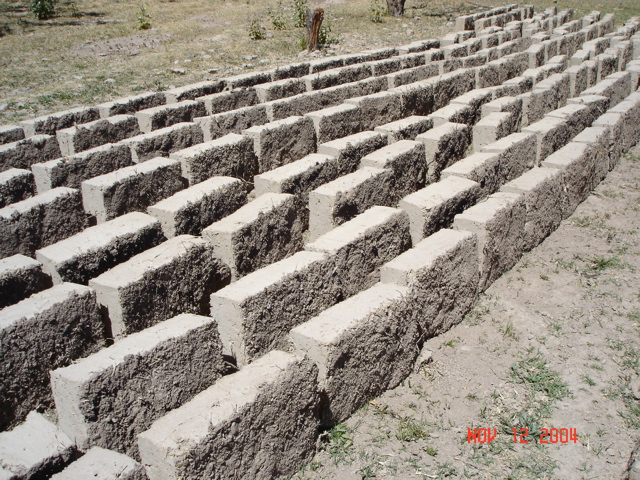
With the completion of the 18 mile climb to Tortuga Grande, we have a good start on the ride to Susques tomorrow. More on Purmamara below:
“PURMAMARCA
The town of Purmamarca sits at an elevation of over 7000 feet. The reds, blues, purples, greens, yellows, browns and whites of the surrounding hills are dazzling against a clear blue sky. The most famous of these is the cerro de siete colores (the hill of seven colors). The mountains were under water and layers of sediments undulate like the waves that formed them. The exposure to differing amounts of oxygen changed the colors of the rock.
The terrain is astounding, but does not block out the terrible poverty of the province. Here many live in the traditional houses, without indoor plumbing. Young boys play soccer on a dusty field, without uniforms or grass. The girls have no such organized recreation. Most families try to survive on tourism, making handicrafts to sell. This helps to preserve the traditional crafts, by teaching them to a new generation. However, the crafts sell for a low price and students are sometimes kept out of school to make goods for the family economy.”
Source:http://purmamarca.argentina-information.com/

 November 12, 2004
November 12, 2004 